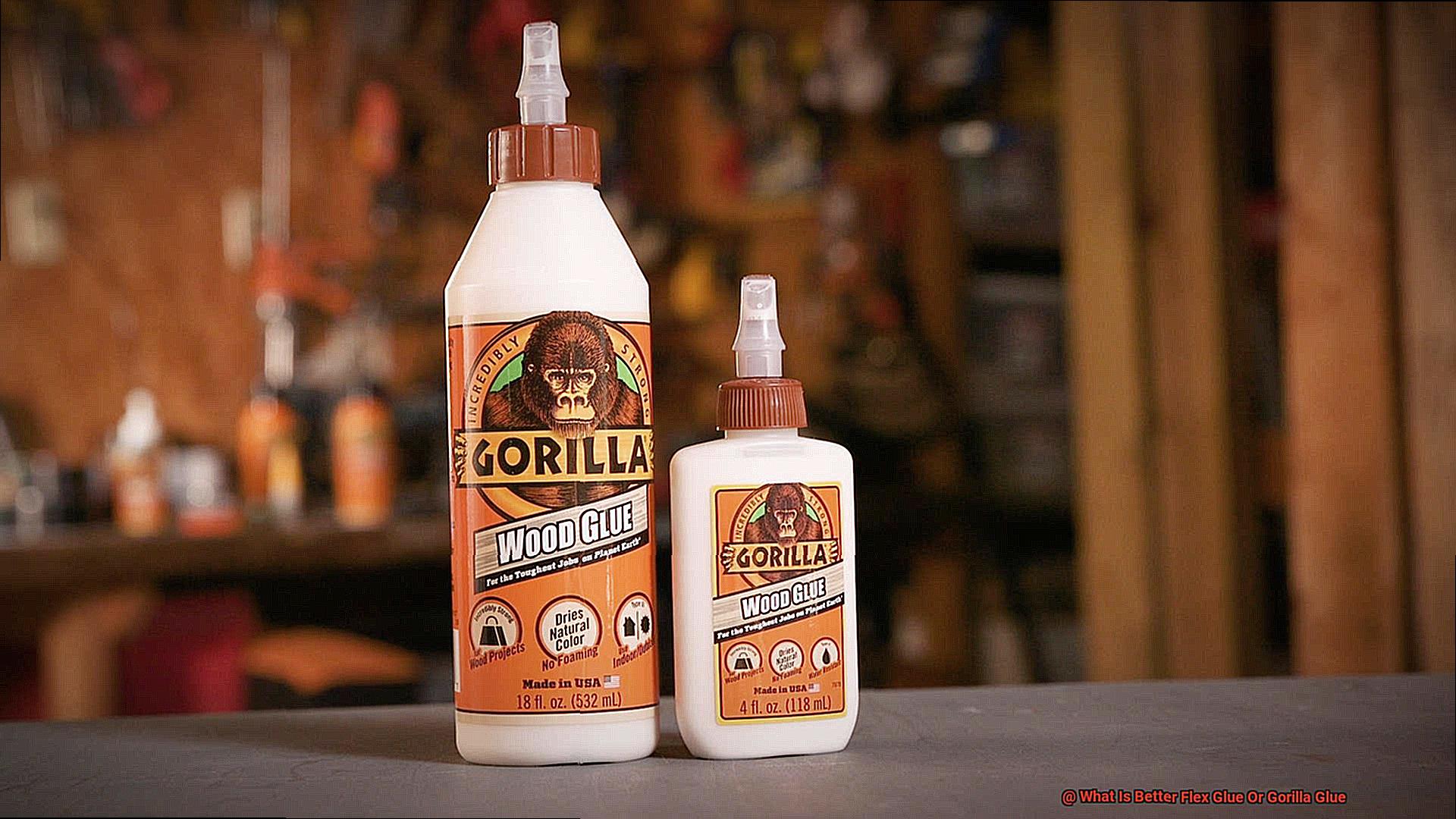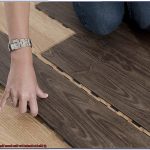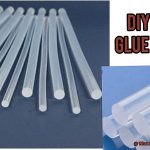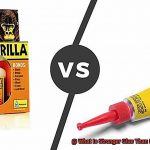Are you sick of those messy glues that just can’t seem to hold anything together?
Well, I’ve got some exciting news for you. In the world of adhesives, there are two heavyweight contenders that have been causing quite a stir: Flex Glue and Gorilla Glue.
These bad boys claim to be the best in the biz when it comes to strength and versatility. But who’s really got what it takes?
So whether you’re fixing up something around the house or taking on a badass DIY project, get ready to find out which glue reigns supreme in the epic showdown of Flex Glue versus Gorilla Glue.
Flex Glue
Contents
Flex Glue is not your average adhesive. It’s a versatile and reliable adhesive that stands out from the crowd. From its exceptional bonding power to its ability to work underwater, Flex Glue has become the go-to choice for DIY enthusiasts and professionals alike. In this overview, we will explore the outstanding features of Flex Glue, including its flexibility, water and UV resistance, quick-drying properties, and underwater capabilities.
Strong Bonding Power:
Flex Glue is a rubberized adhesive that forms an incredibly strong bond on a wide range of surfaces. Whether it’s wood, metal, glass, fabric, or ceramics, this adhesive can handle it all. Its unique formulation creates a bond that can withstand extreme temperatures, vibrations, and even exposure to water. No matter if you’re repairing furniture or working on a home improvement project, Flex Glue ensures a durable and long-lasting bond.
Flexibility:
One of the standout features of Flex Glue is its impressive flexibility. Unlike traditional glues that may crack or break under pressure or movement, Flex Glue moves and stretches with the materials it bonds to. This makes it perfect for applications where some degree of flexibility is expected, ensuring that your projects stay intact for years to come.
Resistance to Water and UV Rays:
Flex Glue is designed to withstand water exposure without losing its adhesive properties. This makes it an excellent choice for projects involving moisture or repairs in wet environments. Additionally, Flex Glue offers exceptional resistance to UV rays, making it suitable for outdoor applications. You can trust that your outdoor furniture repairs or pool projects will stand up to the sun’s harsh rays without deteriorating.
Quick-Drying Properties:
Time is often of the essence when working on projects that require adhesives. With Flex Glue, you don’t have to worry about waiting for hours or days for your bond to set. Its quick-drying formula allows it to set within minutes, allowing you to complete your projects efficiently and effectively. Say goodbye to extended drying times and hello to quick results.
Working Underwater:
Flex Glue’s most impressive feature is its ability to work underwater. Whether you’re repairing a leaky pipe or sealing cracks in a swimming pool, Flex Glue creates a watertight seal that ensures a reliable bond even in submerged conditions. This makes it a game-changer for all your water-related projects.
Flex Glue comes in various convenient packaging options, including tubes, cans, and aerosol cans. This allows you to choose the most suitable packaging for your specific needs, making application easier and more efficient.
Gorilla Glue
Look no further than Gorilla Glue. This incredible adhesive is a game-changer for DIY enthusiasts and professionals alike. Let’s dive into the captivating world of Gorilla Glue and discover why it’s a must-have in your toolbox.
First and foremost, Gorilla Glue is known for its unbeatable bonding capabilities. Whether you’re working with wood, metal, stone, or ceramic, this polyurethane glue has got you covered. It creates a permanent bond that can withstand extreme conditions and heavy loads. No matter what project you’re tackling, Gorilla Glue will ensure a bond that stands the test of time.
But that’s not all – Gorilla Glue is also waterproof. Unlike other adhesives that crumble in the face of water and humidity, Gorilla Glue stays strong and reliable. This makes it perfect for both indoor and outdoor applications. So go ahead and fix that broken chair leg or create that outdoor sculpture without worrying about the elements.
Versatility is another area where Gorilla Glue shines. It can be used on a wide range of surfaces, from porous to non-porous materials. This means you can use it for anything from repairing a shoe sole to bonding metal pieces together. The possibilities are endless.
Application-wise, Gorilla Glue is a breeze to use. It comes in a liquid form and can be applied directly from the bottle using a brush or applicator. The glue dries relatively quickly, allowing you to move on with your project in no time. Just make sure to follow the instructions and provide proper clamping for the best results.
While Gorilla Glue has many advantages, there are a couple of things to keep in mind. The glue expands as it cures, so be careful not to apply too much to avoid messy application. Additionally, slightly dampen the surfaces being bonded for optimal activation and curing.
Waterproof and Indoor/Outdoor Use
When it comes to adhesive glues, two popular options that come to mind are Flex Glue and Gorilla Glue. These versatile glues are marketed as waterproof adhesives suitable for indoor and outdoor use. In this article, we will delve into the specialized formulations of these glues and their ability to withstand various conditions, helping you make an informed decision for your DIY projects.
Flex Glue: The Ultimate Waterproof Solution
Flex Glue stands out as the ultimate waterproof solution. Its innovative formulation is specifically designed to be waterproof, making it ideal for applications where water exposure is a concern. Whether you need to repair a leaky pipe or secure tiles in a swimming pool, Flex Glue can provide a strong bond that can even be applied underwater. Its versatility extends to surfaces like metal, wood, foam, glass, and more, ensuring it can tackle any project with ease.
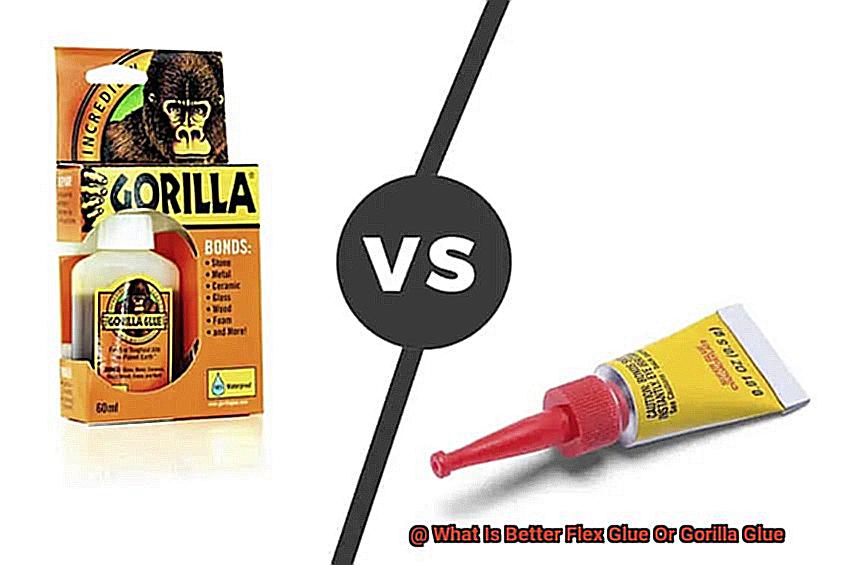
Gorilla Glue: Reliable Water Resistance
While Gorilla Glue is not specifically designed as a waterproof adhesive, it offers reliable water resistance capabilities. It forms a strong bond that can resist water and moisture, making it suitable for various indoor and outdoor projects. From fixing outdoor furniture to repairing outdoor structures, Gorilla Glue provides durable adhesion that withstands the elements. However, it may not be as effective as Flex Glue in extreme conditions or prolonged exposure to water.
Indoor Use: A Perfect Match
Both Flex Glue and Gorilla Glue excel in indoor applications. They are suitable for bonding materials like wood, plastic, ceramic, fabric, and more. Whether you’re repairing furniture or creating craft projects, these glues offer reliable adhesive strength for your indoor endeavors. Their versatility allows you to confidently tackle any indoor project with ease.
Outdoor Use: Withstanding the Elements
When it comes to outdoor use, both Flex Glue and Gorilla Glue offer durability and resistance to weather elements. They can be used to secure outdoor furniture, repair outdoor structures, or bond materials for DIY projects. However, it’s essential to consider the specific needs of your project and the expected environmental conditions. If you anticipate extreme weather or prolonged exposure to water, Flex Glue’s specialized waterproof formulation may be the better choice.
Choosing the Right Glue for Your Project
While Flex Glue may have an edge in terms of waterproofing properties due to its specialized formulation, Gorilla Glue still offers reliable water resistance and can handle most indoor and outdoor projects effectively. To determine which glue is best for your project, consider factors such as the materials you are working with, the level of water exposure expected, and the overall durability needed. By carefully evaluating these aspects, you can confidently choose the glue that will provide optimal results for your specific project.
Drying Time Comparison
Get ready to dive into the fascinating world of adhesives as we compare the drying times of two popular contenders: Flex Glue and Gorilla Glue. Time is of the essence when it comes to completing our projects, so let’s find out which glue can get the job done faster.
Let’s start with Flex Glue. This adhesive is known for its lightning-fast drying time, allowing you to finish your projects in a jiffy. Within just 24 to 48 hours, depending on the thickness of the application and environmental conditions, Flex Glue will be dry and ready to go. No more twiddling your thumbs while your project slowly dries – this glue means business.
Now, onto Gorilla Glue. While it may not be as quick as Flex Glue, it still gets the job done. Gorilla Glue typically takes around 2 to 4 hours to dry, but full curing can take up to a whopping 24 hours or even longer. So if you’re not in a rush and can afford to wait a bit longer for that bond to set, Gorilla Glue might be your go-to.
But wait, there’s more. Let’s talk about some factors that can influence drying time. Both Flex Glue and Gorilla Glue are affected by temperature and humidity. When it’s hot out and humidity levels are low, these glues dry faster than a cheetah chasing its prey. On the flip side, colder temperatures and higher humidity may slow down the drying process. So keep an eye on the weather forecast before embarking on your glue-related adventures.
But here’s the deal – drying time isn’t everything. While Flex Glue may dry faster than Gorilla Glue, it’s important to remember that both adhesives need some time to reach their maximum strength and durability. In fact, it can take up to a whopping 7 days for these glues to fully develop their bond strength. So patience is key when it comes to achieving the strongest hold.
So, which glue should you choose? Well, it all depends on your project requirements. If you’re working on a small-scale project or need a quick fix, Flex Glue’s fast drying time will save the day. But if you can wait a bit longer and require a stronger bond, Gorilla Glue is your best bet.
Remember, always follow the manufacturer’s instructions regarding drying and curing times to ensure the best results. And don’t forget to consider other factors like water resistance and overall durability when choosing the perfect glue for your masterpiece.
Flexibility after Drying
In the realm of glues, two contenders reign supreme – Flex Glue and Gorilla Glue. While both boast impressive adhesive properties, their true battle lies in the realm of flexibility after drying. This pivotal distinction is paramount in selecting the perfect glue for your project. Prepare to embark on an adhesive odyssey as we delve into the world of Flex Glue and Gorilla Glue, exploring their contrasting traits when it comes to flexibility after drying.
Flex Glue: The Unyielding Champion of Flexibility
Flex Glue emerges from its chemical concoction designed to retain its pliability even after drying. This adhesive marvel is tailor-made for applications that demand materials capable of bending or swaying, such as repairing rubber or vinyl surfaces. Its unwavering flexibility ensures a bond that lasts, without compromising structural integrity.
Gorilla Glue: The Mighty Rigid Powerhouse
On the flip side, Gorilla Glue solidifies into a hardened, inflexible finish. While this adhesive titan offers unparalleled bonding strength, it may not be the optimal choice when flexibility is a critical factor. However, if your project prioritizes raw power over adaptability, Gorilla Glue still stands as a reliable option.
Choosing the Right Glue:
To navigate the labyrinth of adhesive choices, consider the specific requirements of your project. If flexibility reigns supreme, Flex Glue emerges as the unrivaled victor with its unwavering ability to maintain elasticity even after drying. Nevertheless, if strength surpasses suppleness on your project’s priority list, Gorilla Glue remains a dependable contender.
Enhancing Gorilla Glue’s Flexibility:
In certain scenarios, you may seek to bolster Gorilla Glue’s flexibility for a particular undertaking. This can be achieved through the cunning fusion of other materials or innovative techniques. However, bear in mind that this endeavor may necessitate additional experimentation and testing to achieve the desired outcome.
Bonding Strength Comparison
Step right up and witness the ultimate battle of adhesive supremacy. In one corner, we have the mighty Flex Glue, known for its flexible nature and exceptional bonding strength. And in the other corner, we have the indomitable Gorilla Glue, a polyurethane adhesive that packs a punch with its formidable bonding power. Brace yourself as we dive into the world of adhesive greatness and determine which glue reigns supreme.
Flex Glue: The Flexible Champion
Flex Glue is not your average adhesive. This powerhouse is not only known for its impressive bonding strength but also for its unparalleled flexibility. It can bond an array of materials, including wood, metal, glass, and fabric. But what sets Flex Glue apart from the competition is its unique ability to withstand vibrations and movements without compromising its bond. It’s the go-to glue for repairing objects that undergo stress or movement.
Gorilla Glue: The Indomitable Powerhouse
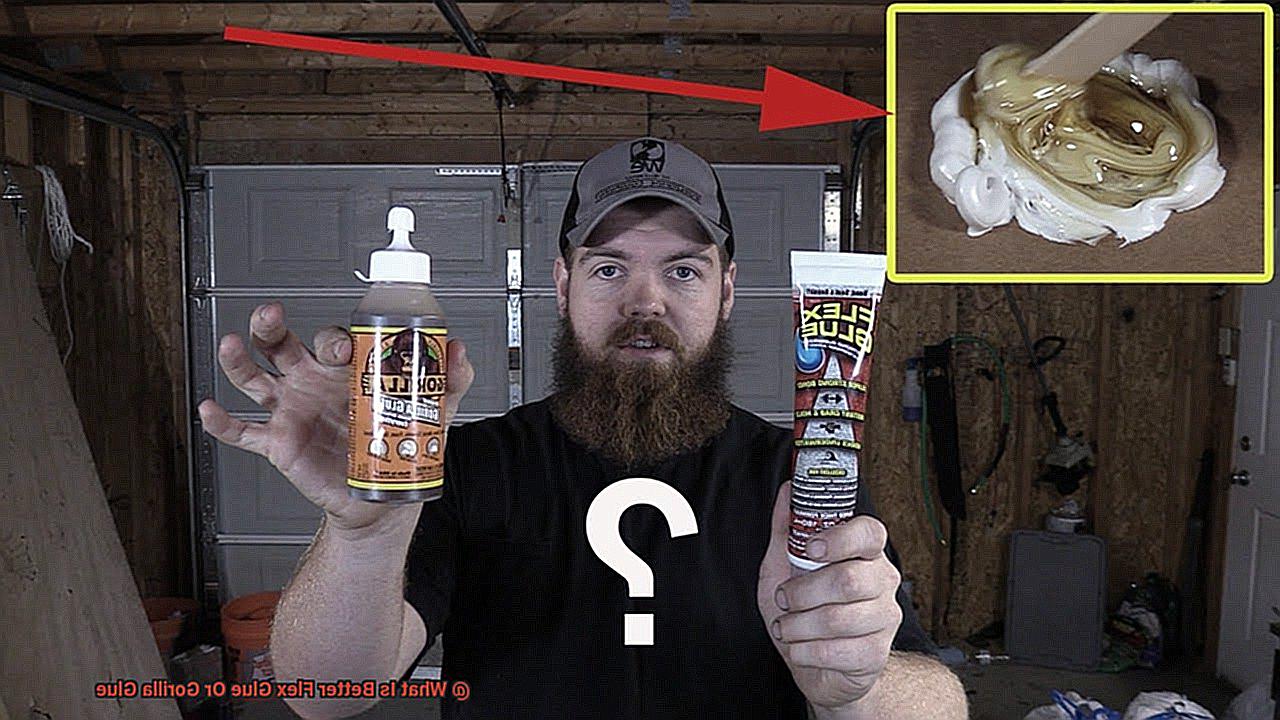
Prepare to be amazed by Gorilla Glue, a force to be reckoned with in the adhesive world. This polyurethane adhesive unleashes its bonding strength by expanding into the material’s pores, forming an unbreakable bond. It’s commonly used for bonding wood, stone, metal, ceramics, and more. But that’s not all – Gorilla Glue’s foaming action fills gaps and provides extra strength to the bond, making it an unstoppable force in the battle for adhesion perfection.
The Battle Begins:
Let’s get down to business – raw bonding strength. Both Flex Glue and Gorilla Glue deliver exceptional results when it comes to forming durable bonds. Extensive testing has proven their ability to provide reliable adhesion in various applications. However, it’s important to consider specific factors such as the materials being bonded and the application conditions, as they can influence the overall bonding strength.
Surface Preparation:
Prepare for victory by ensuring optimal surface preparation. Clean, dry surfaces that are free from dust or grease are essential. For an extra boost in bonding strength, roughening smooth surfaces can work wonders. Remember, following the instructions provided by each product is key to achieving the desired results.
Application Method:
Both Flex Glue and Gorilla Glue offer user-friendly application methods. Whether it’s squeeze tubes or spray bottles, these glues have got you covered. To achieve a strong bond, apply an even layer of adhesive and allow sufficient drying time. And don’t forget, both Flex Glue and Gorilla Glue offer specialized formulas tailored for specific materials or applications. So choose wisely for your project’s needs.
Ease of Application
Step into the fascinating realm of glues as we embark on a captivating journey to compare two adhesive powerhouses: Flex Glue and Gorilla Glue. Prepare yourself for an enthralling sticky showdown that will leave you in awe.
Let’s begin our exploration by delving into the crucial aspect of ease of application. In this arena, Flex Glue takes the lead with its luxuriously thick and viscous consistency. This remarkable attribute allows for unparalleled control and precision during application, whether you’re engaged in a petite craft project or tackling a gargantuan home renovation endeavor. The applicator design deserves accolades as well, ensuring a seamless and even flow that minimizes the dreaded mess and wastage. Bid farewell to the days of grappling with uncontrollable glue globs.
On the opposing side, we encounter Gorilla Glue, a polyurethane adhesive that demands a touch more effort during application. Before unleashing the power of Gorilla Glue, one must moisten the surfaces with water to activate its formidable bonding properties. While this additional step may introduce a smidgen of complexity to the process, it bestows upon users the flexibility to adjust the set time and secure flawless adhesion. So, if you’re willing to invest a modicum of extra elbow grease, Gorilla Glue remains an undeniably formidable contender.
Now, let us turn our attention to drying time. Once again, Flex Glue emerges triumphant with its relatively swift curing process. This translates into reduced waiting time and expedited completion of your artistic projects. Ideal for those who crave immediate results or find themselves entangled in time-sensitive endeavors. Conversely, Gorilla Glue possesses a more protracted drying period and necessitates pressure during the curing process. Thus, one must dutifully clamp or hold the bonded surfaces together until the glue sets completely. Patience becomes paramount in this realm.
Last but certainly not least, we come to the topic of cleanup. Flex Glue exhibits water resistance when fully cured, presenting a splendid advantage if your project inadvertently encounters water. Nevertheless, this commendable attribute also renders the removal of excess glue a tad challenging once it solidifies. Conversely, Gorilla Glue can be efficiently cleansed with the aid of acetone or isopropyl alcohol before it reaches complete curing. This affords you a golden opportunity to rectify any mishaps or spills along your adhesive journey.
Price Comparison
Today, we embark on an exciting journey into the world of adhesives as we compare the prices of two heavyweights: Flex Glue and Gorilla Glue. But before we dive in, let’s take a moment to understand the key factors to consider when comparing their prices.
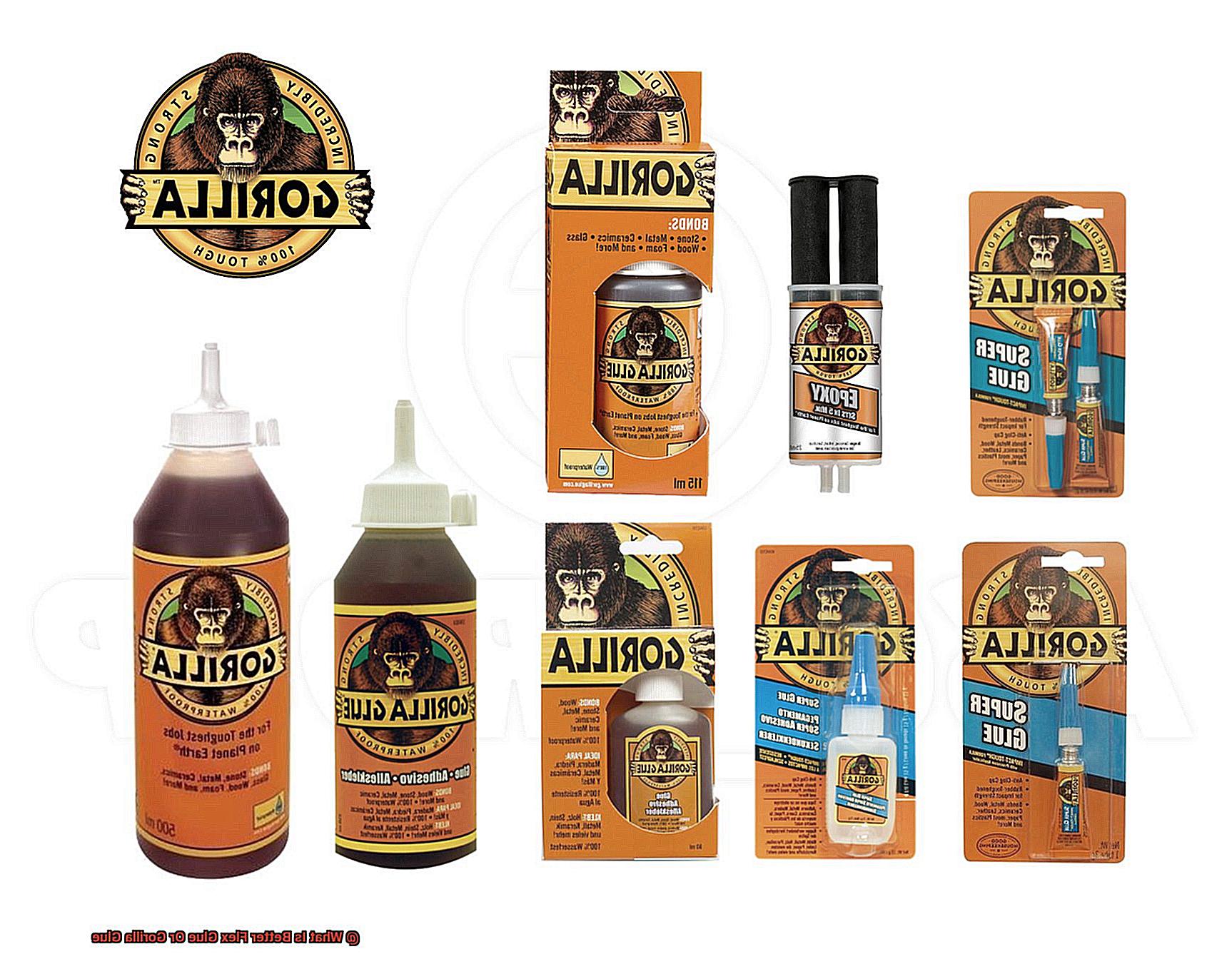
Container Size:
Flex Glue offers a wide range of container sizes, from the convenient 6 oz tube to the mighty 14 oz container. As the container size increases, the price per ounce decreases, making the larger sizes more cost-effective in the long run. Similarly, Gorilla Glue comes in sizes ranging from a compact 2 oz bottle to a robust 18 oz container. Just like Flex Glue, Gorilla Glue follows the same pattern of decreasing price per ounce with larger container sizes.
Quantity of Glue Provided:
When it comes to quantity, both Flex Glue and Gorilla Glue have options that cater to different needs. Flex Glue offers various sizes, ensuring you can choose the right amount for your project. Likewise, Gorilla Glue provides multiple options, allowing you to find the perfect fit for your adhesive requirements.
Price Comparison:
While both glues boast unique features, it’s crucial to consider the price per ounce. Generally, Gorilla Glue tends to be slightly cheaper than Flex Glue. However, it’s important to note that prices can vary depending on where you purchase these products. Keep an eagle eye out for discounts or promotions offered by different retailers.
Value Packs and Combo Deals:
Saving money while getting your adhesive fix? Yes, please. Both Flex Glue and Gorilla Glue offer value packs and combo deals that can help you save some extra bucks. These bundles often include multiple containers or even additional adhesive products from the same brand. So be on the lookout for these deals if you frequently use glue.
Performance and Suitability:
Remember, price is not the sole factor to consider. Evaluate the performance and suitability of Flex Glue and Gorilla Glue for your specific needs. Factors like bonding strength, drying time, and the surfaces they can be used on should be taken into account to ensure you make the right choice.
t9Uj2-T_3G0″ >
Conclusion
After considering the performance and characteristics of both Flex Glue and Gorilla Glue, it is clear that one outshines the other. Flex Glue emerges as the superior choice due to its remarkable adhesive strength and versatility. With its ability to bond a wide range of materials, from wood to metal to plastic, Flex Glue proves itself as a reliable and effective adhesive solution.
Not only does Flex Glue exhibit exceptional bonding power, but it also excels in durability. Its robust formula ensures long-lasting results, even in harsh conditions or high-impact scenarios. Whether you’re working on a small DIY project or tackling a larger repair job, Flex Glue’s resilience will not disappoint.
Another notable advantage of Flex Glue is its ease of use. The user-friendly application process makes it accessible for both professionals and amateurs alike. Its quick-drying nature allows for efficient work, saving you precious time during your projects.
Furthermore, Flex Glue boasts excellent water resistance properties. It can withstand exposure to moisture without compromising its adhesive capabilities. This feature makes it particularly suitable for outdoor applications or areas prone to water contact.
On the other hand, while Gorilla Glue has its merits, it falls short when compared to the impressive attributes of Flex Glue. Gorilla Glue may be known for its strong hold, but it lacks the versatility and adaptability that sets Flex Glue apart.
In conclusion, when faced with the decision between Flex Glue and Gorilla Glue, there is no doubt that Flex Glue reigns supreme. Its superior adhesive strength, durability, ease of use, and water resistance make it the go-to choice for various bonding needs. So why settle for anything less than extraordinary?

